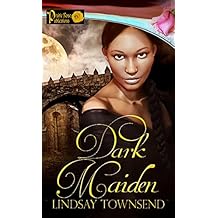Do you remember how you reacted when you found out that poet George Sand was a woman? You were probably in high school and astounded by the revelation. I certainly was. I then decided to name my first girl George. Fortunately, I never had a girl child, but the father of my Cotillion Ball siblings is named George.
How about Harper Lee? Come on, show of hands. How many of you were misguided into believing the author of To Kill A Mockingbird was a man? Or, more recently, do you remember when J.K. Rowling morphed into Robert Galbraith in a reverse of the phenomenon?
Women in the publishing world have been attempting to level the playing field for hundreds of years by creating ambiguous or misleading pen names. When dime novels—the first form of mass marketed books—came into existence in the 1800s, the odds were stacked even higher, as the topics in these books normally contained tales of swashbuckling heroes, gunslingers, gold miners or explorers, and generally harsh surroundings. Things that refined ladies would never know of, or ever experience, much less be able to write about.
The Dime Novel, or the Penny Dreadful, as these books were referred to in England, were the precursor to today’s paperbacks and e-books. Although these dime novels didn’t have as their primary focus the world of romance, they did set the stage for the romance industry, as they were responsible for introducing reading for pleasure to the masses. These books were printed in a four by six inch format, and were about a hundred pages in length, with a die-cut cover image that usually contained a spot of color. And thanks to the advancement of the printing industry at the same time the growth of education in America was happening, the dime novel was able to take advantage of both and become a major force in publishing. They filled a void in American literature for several decades, as the education of the working class created a need for reading material. They were published as frequently as every two weeks, and the characters developed in them often went from one tale to the next.
Dime novels in America were rough-and-tumble books, mostly about the Wild West. The plots were sensational and melodramatic, making for great reading among the streets of relatively tame east coast cities.
The first known dime novel in America was written by a woman—Mrs. Ann Stephens—and was entitled “Malaeska, the Indian Wife of the White Hunter.” Risque, tantalizing reading in 1839, to be sure.
With millions of dime novels being printed each year, the search for quality authors and stories grew. The fertile imaginations of women molded from the same cloth as Mrs. Stephens led to the formation of many memorable characters, such as Harry Hawk, the hero in the dime novel I created for my book, The Duplicitous Debutante. The author of the Harry Hawk series is a well-bred young lady, Rosemary Fitzpatrick, who invents the name, F.P. Elliott, to disguise her true identity.
The Duplicitous Debutante is the sixth book in the Amazon best-selling Cotillion Ball series, and was re-released in a new format on March 28, 2019.
















